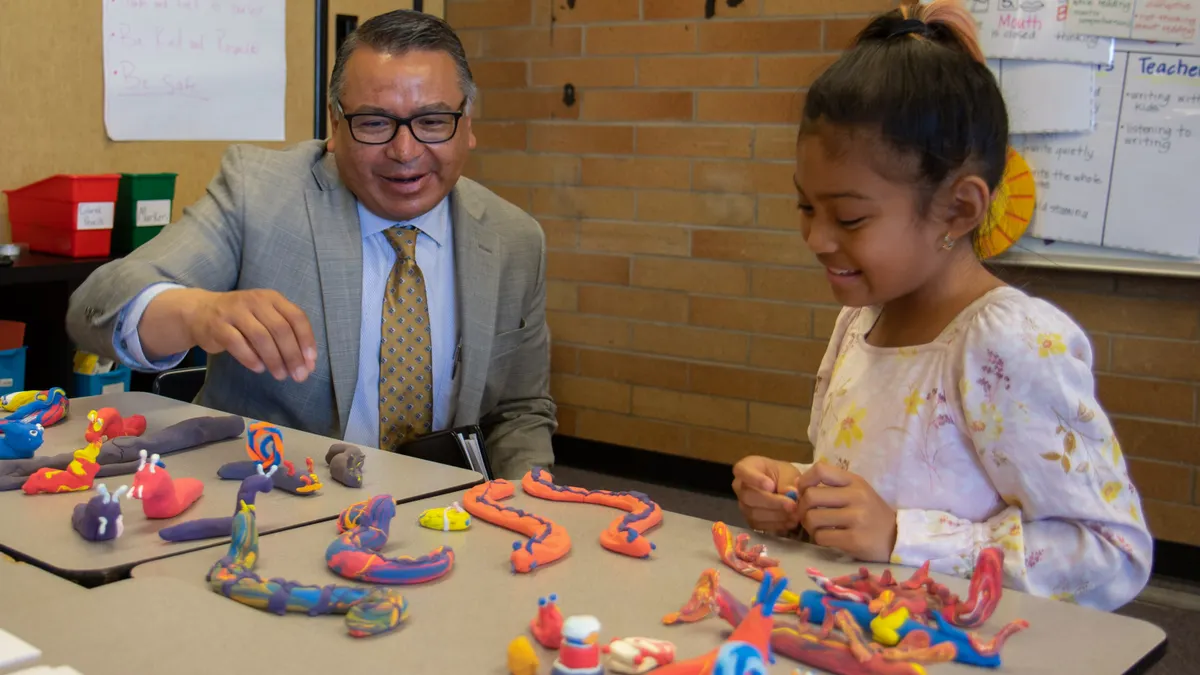It's that time of year again. From now through July, schools will be considering tech purchases and the challenges that come with them.
To make things easier for schools and districts, hardware, software, and service solutions provider Insight Enterprises on Tuesday issued a list of five critical issues that administrators will have to consider when making purchases for the 2015-16 school year. "Whether it's laptops, tablets, smartphones or desktops, teachers, and students are using devices more than ever before, and it is vital that school districts prepare their infrastructure for what lies ahead," said Dave Cristal, vice president and general manager of Insight Public Sector, in a release.
Education Dive took a closer look at the five critical areas identified by Insight, and what schools should keep in mind when addressing them.
1. The expenses of upgrading IT infrastructure
Despite pushes to put devices like iPads or Chromebooks in every classroom, it's no secret that a large number of schools lack the necessary IT infrastructure to support a high number of users. President Barack Obama's ConnectED initiative aims to put reliable, high-speed broadband in 99% of U.S. schools by 2018, but doing so is easier said than done.
Insight notes that a building's age and how it was wired can impact efforts to facilitate tech deployments, and it's a good point: Some building materials can also impede WiFi signals. Schools must also potentially plan for multiple connections to support the amount of bandwidth students will consume, as well as enough routers to extend access to every classroom. With all of that in mind, it's worth considering the FCC's E-rate program for assistance in funding the connections.
2. The necessity (or lack thereof) of computer labs
With tech deployments potentially placing a device in the hands of every student, schools can probably save in the long run by abandoning traditional computer labs. They become a bit of a moot point once a school has an array of digital learning carts that can be moved to and from classrooms — though, again, those questions surrounding infrastructure and the cost to upgrade come with such a move.
Also worth considering here: New research from Northwestern University showing that pairs of kids with a single iPad learned better than those in 1:1 deployments or with no device at all. Specifically, Communications Ph.D. student Courtney Blackwell found that students in three Chicago-area kindergarten classrooms saw scores increase 28% when paired up with iPads, compared to 24% in a 1:1 deployment and 20% with no iPad at all. With that evidence in mind, schools may not need to buy as many devices.
3. Replacing paper textbooks with eBooks is cost-effective
Most schools are still using paper textbooks, and the high cost that comes with that medium is common knowledge. Insight's release, however, says that even with the cost of devices for viewing eBooks considered, making the jump will still save money in the long run.
Think about it this way: Paper textbooks can become out-of-date within a year or two. An eBook, however, can be updated or upgraded to a later version at a much lower cost because costs like materials and delivery are no longer part of the equation. With eBook sales rising 45% since 2011, the switch is coming soon, so it may make the most sense to take the plunge before committing to another paper textbook order.
4. Moving exams to the computer
Of course, textbooks aren't the only thing going digital. Many states are shifting to computer-based annual standardized tests, and the move is causing much larger headaches than any textbook transition. Yes, digital exams do simplify and speed up the testing process by providing immediate feedback on student performance and trends, but once again, the issue of bandwidth rears its head.
For example, digital exams from Measured Progress, Pearson, CTB/McGraw-Hill, and others have faced infrastructure and bandwidth-related issues in states including Montana, Florida, Nevada, Oklahoma, Indiana, Kansas, and Minnesota in recent years. Hiccups in the early years of switching to a new model are to be expected. Testing providers like Measured Progress are working with states to address those issues to the extent that they can. But it is still a switch that will require many schools to seek additional funding for improvements to their broadband infrastructure.
5. Bringing clickers into classrooms
Clickers, which let all students in a class answer questions in real-time, are common in many college gen ed courses, but they're also finding a place in K-12. Instead of calling on a single student, a teacher in a classroom where students have clickers can present a multiple choice question and get feedback for all students — especially those too shy to raise their hand.
Some companies, like iClicker, also now have apps that allow students with smartphones to use their own device as a clicker, so this may be a more cost-effective route in cases where a school has enough tablets. Additionally, the devices could serve a function in group learning activities, with a teacher, for example, turning a test review into a team-based quick recall type of game.
Would you like to see more education news like this in your inbox on a daily basis? Subscribe to our Education Dive email newsletter! You may also want to read Education Dive's look at 3 schools that focus on creativity over standardization.






 Dive Awards
Dive Awards











